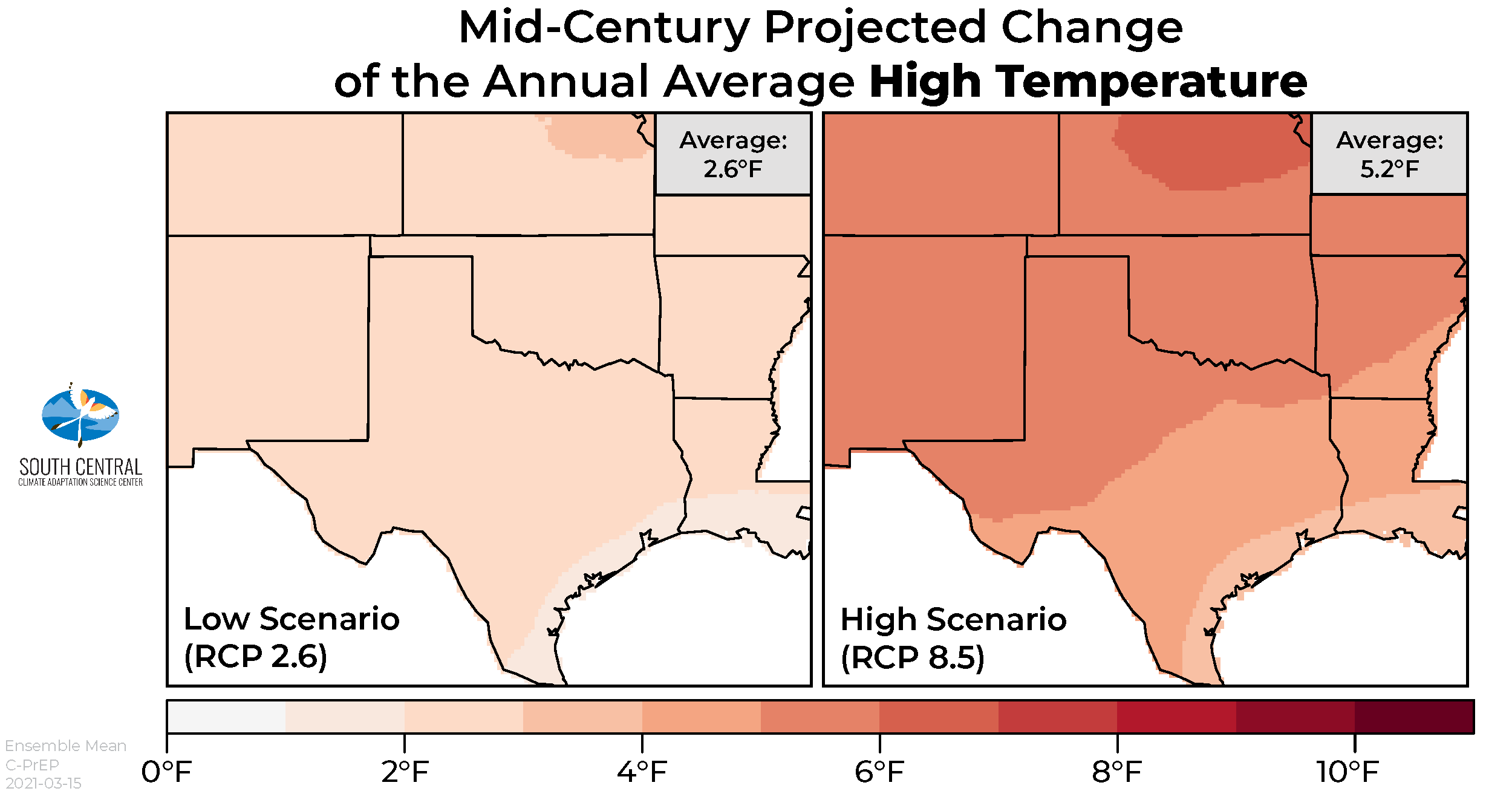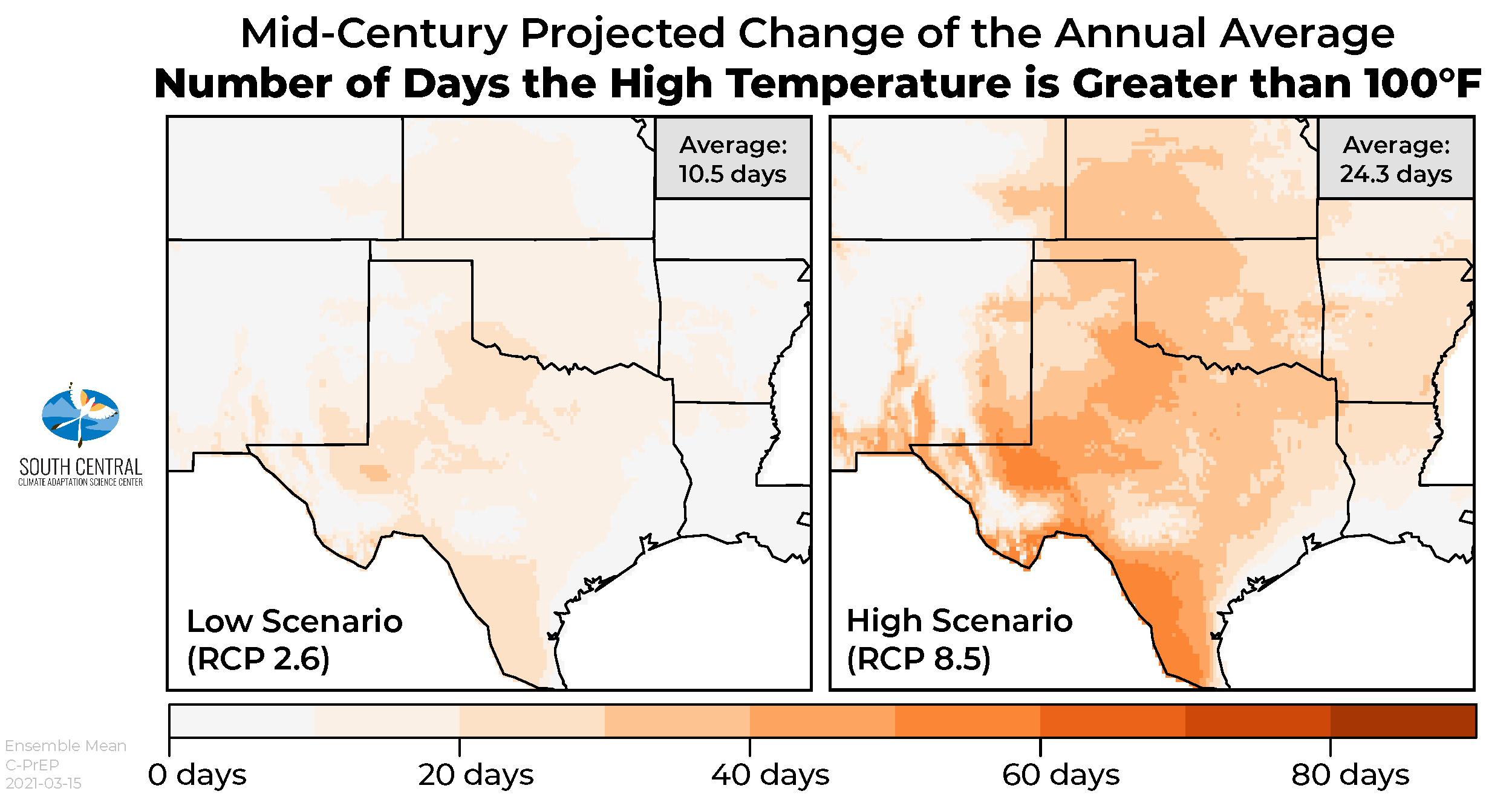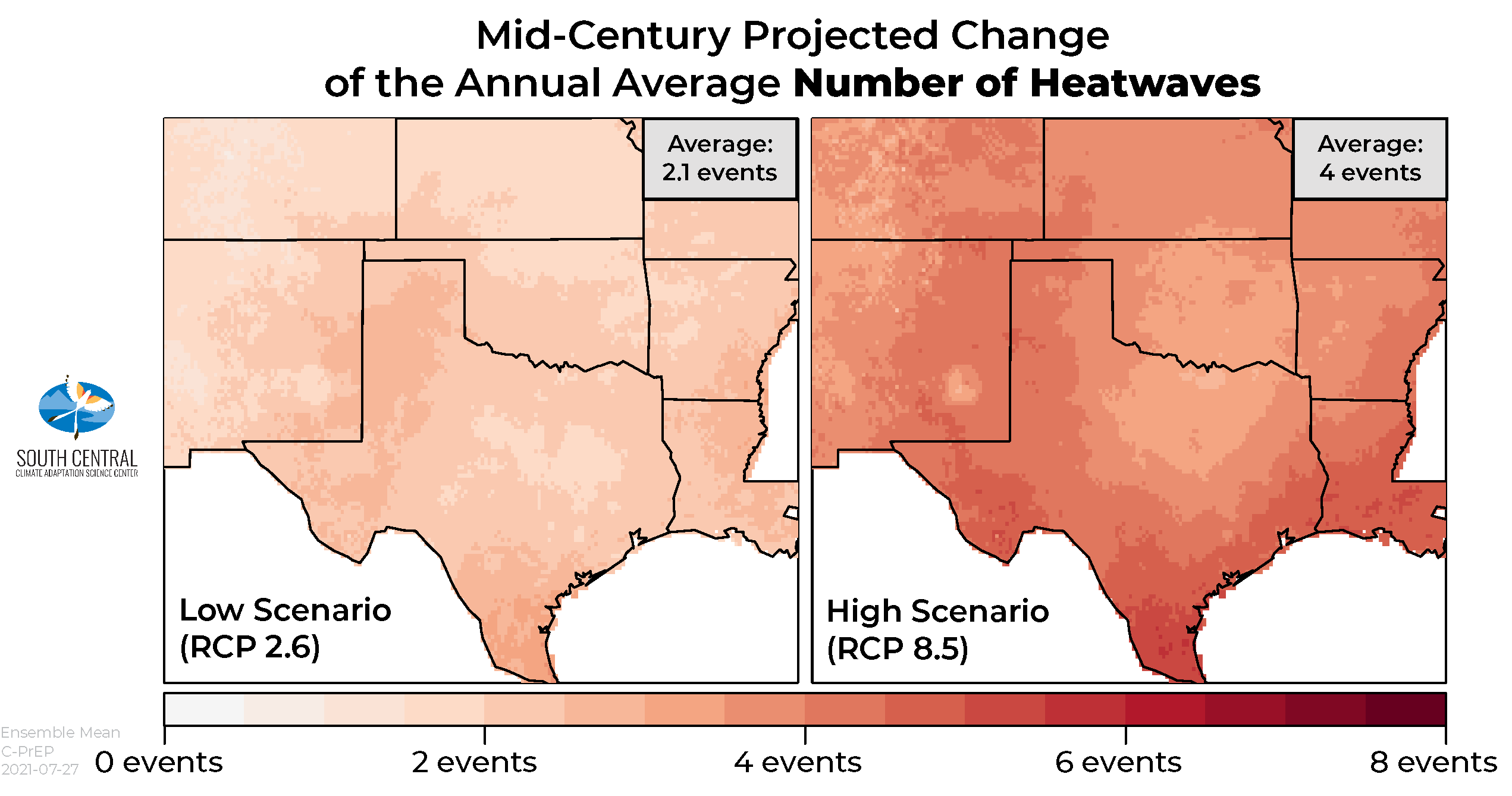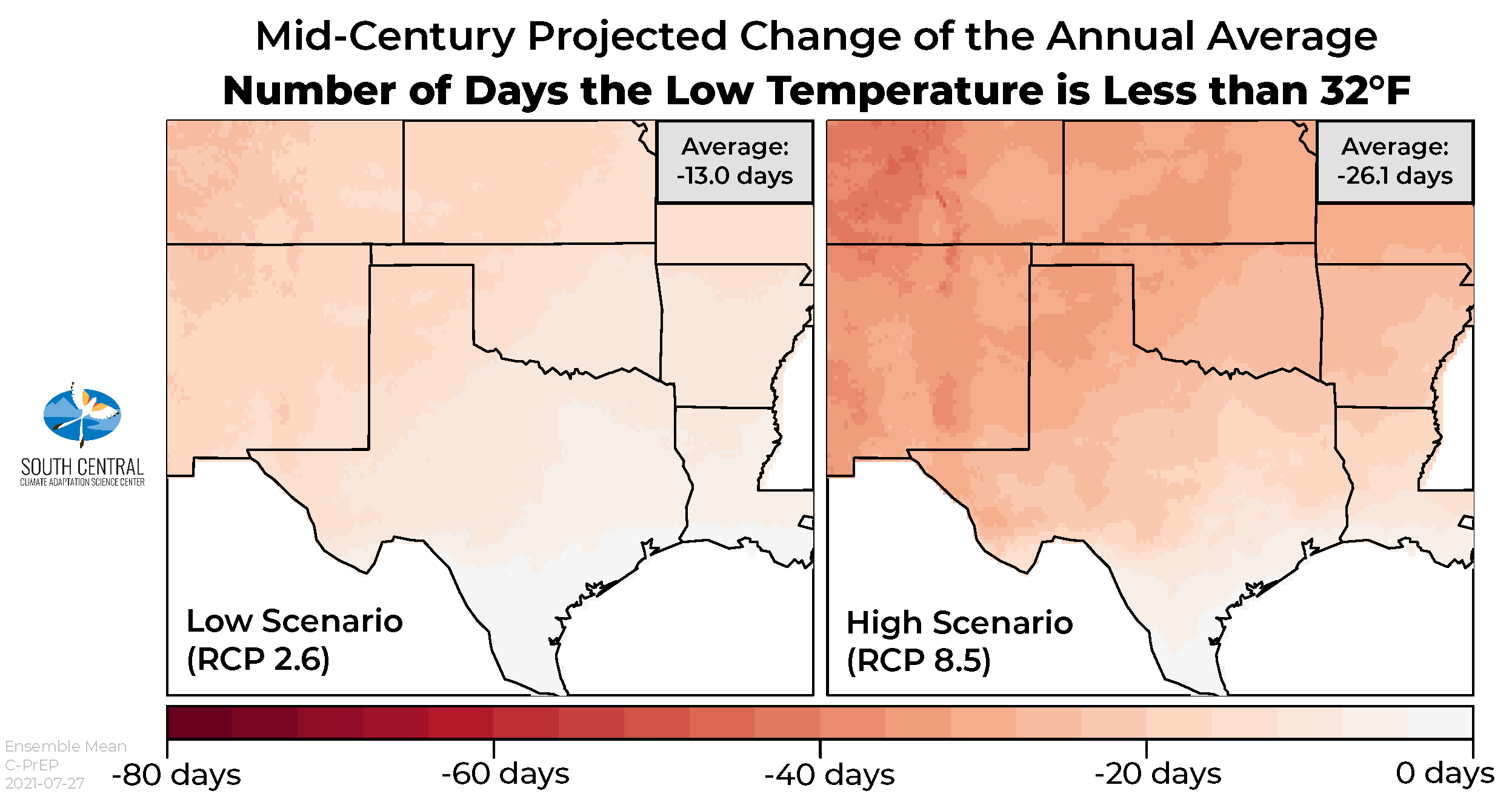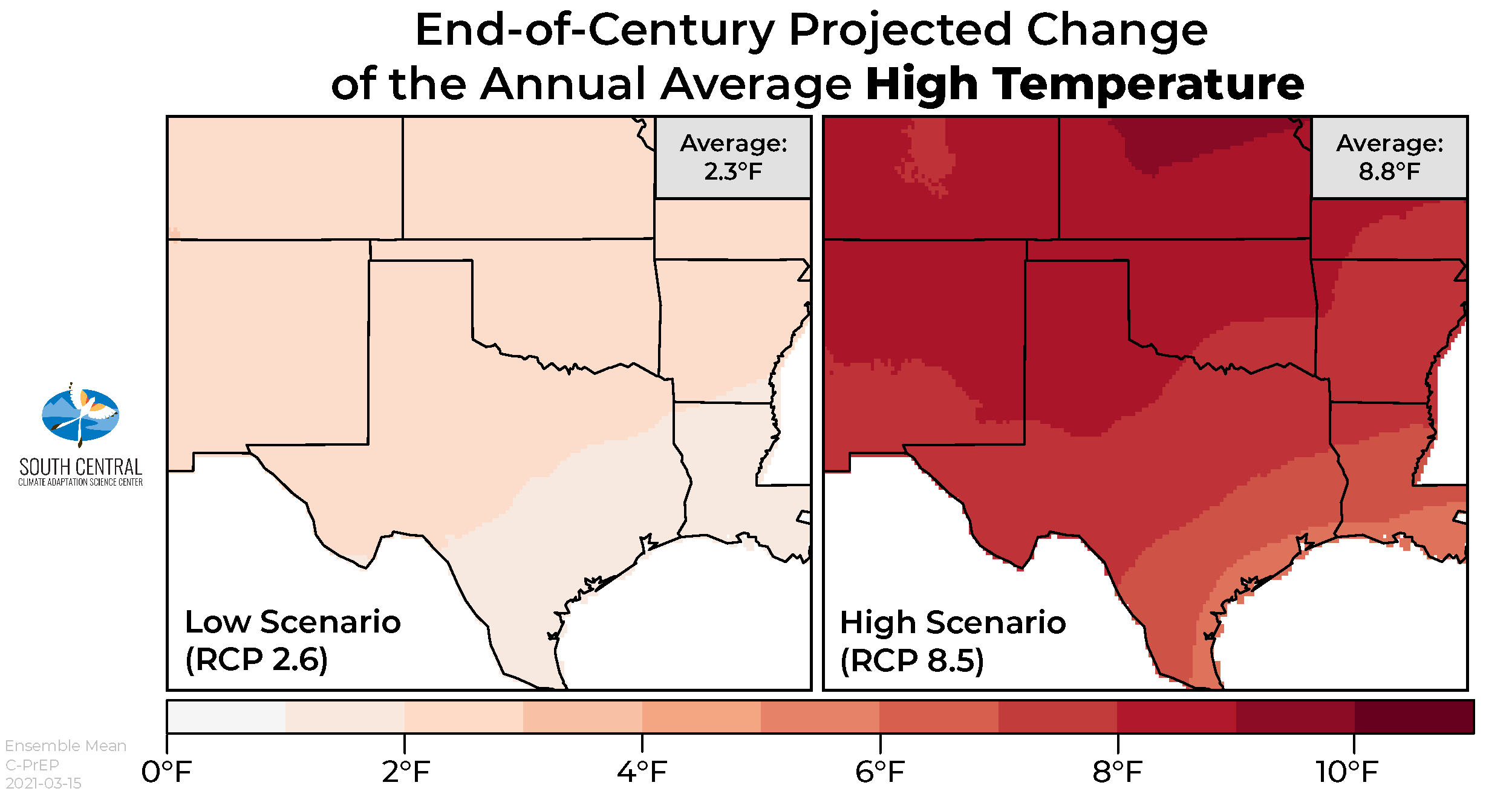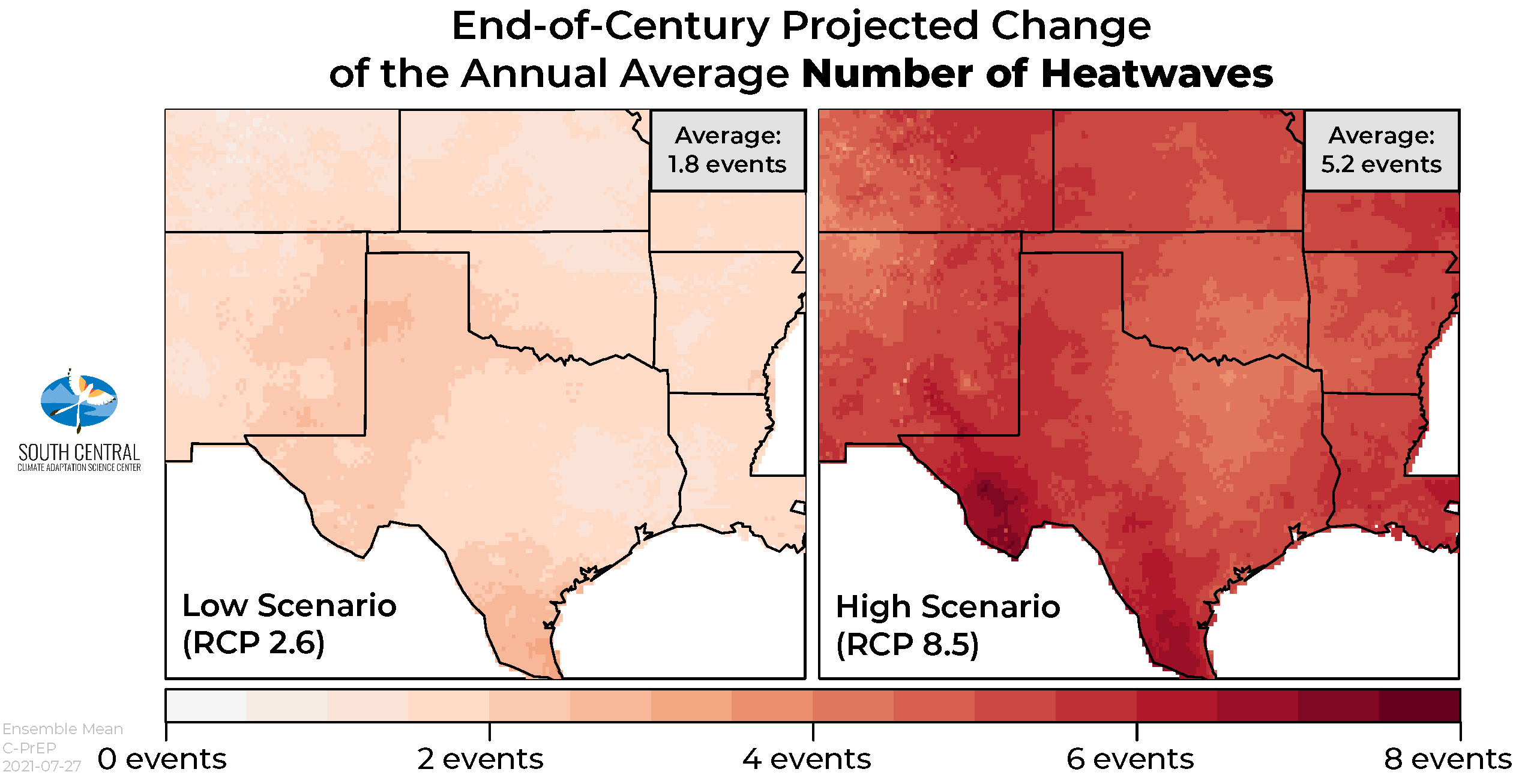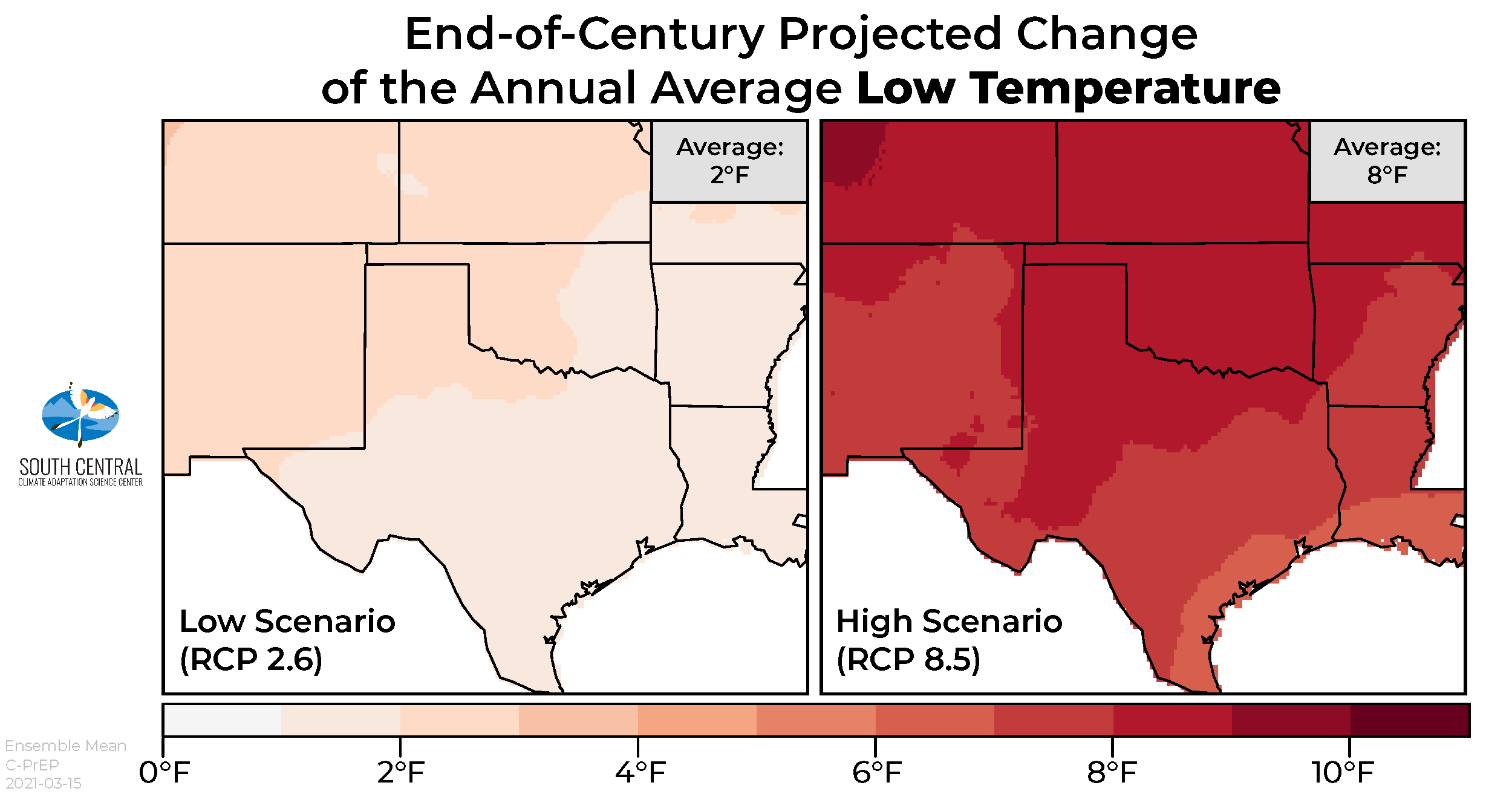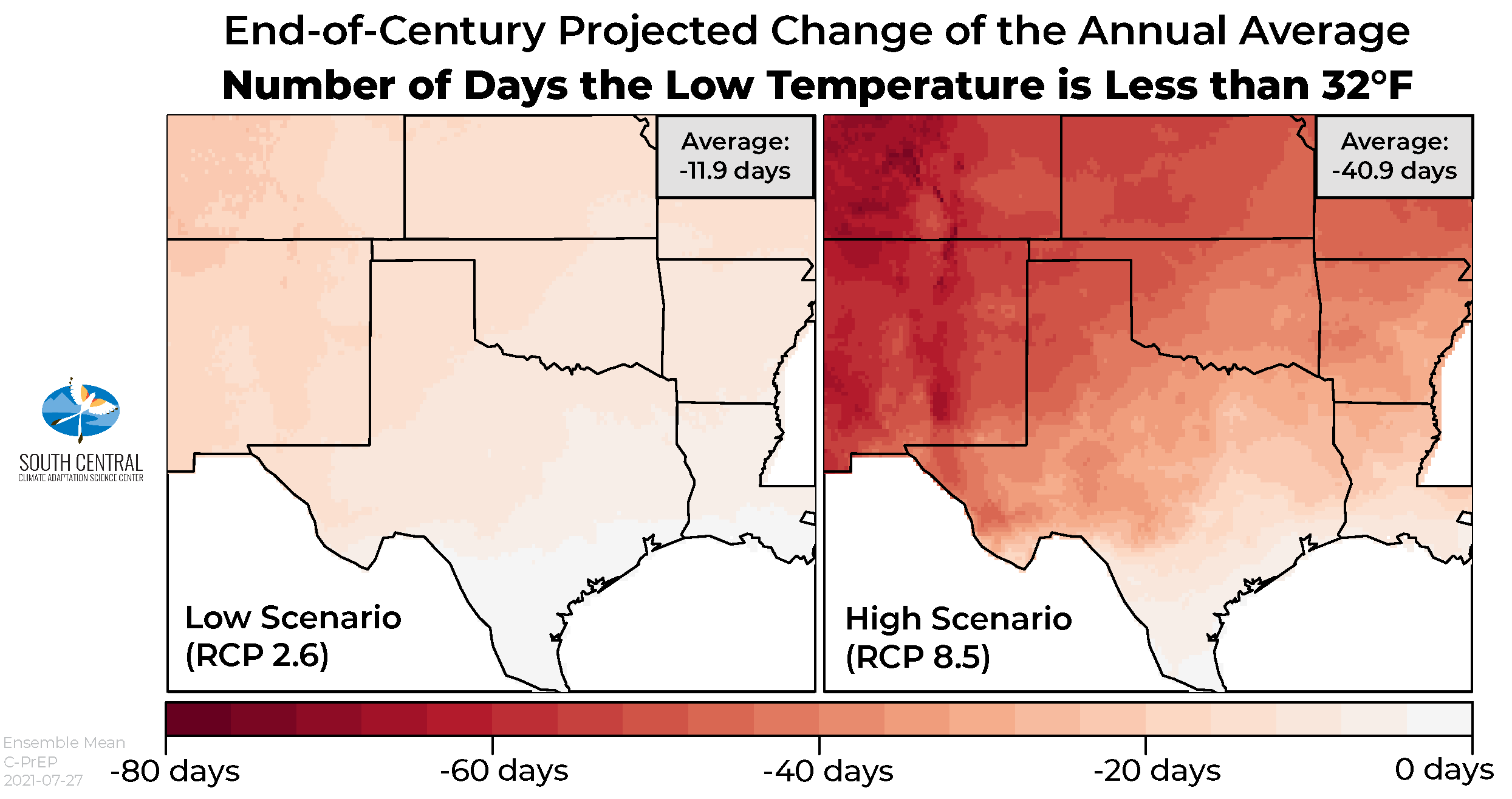We expect temperatures across our region to increase in the future. How much of an increase is dependent upon the actions society takes today and over the next decade. Below is a selection of our temperature-based climate projections for the south-central U.S. for mid-century (2036-2065) and end-of-century (2070-2099). Additional temperature-based climate projections are available upon request.
To learn more about how these projections were created, check out our overview webinar on YouTube: https://youtu.be/qlfMKX0z7gI
Please use this citation for the graphics below: Dixon K.W., A.M. Wootten, M.J. Nath, J. Lanzante, D.J. Adams-Smith, C.E. Whitlock, C.F. Gaitán, R.A. McPherson, 2020: South Central Climate Projections Evaluation Project (C-PrEP), South Central Climate Adaptation Science Center, Norman, Oklahoma, USA. DOI: https://doi.org/10.21429/12gk-dh47
Mid-Century (2036-2065)
Low Scenario
With a significant reduction in greenhouse gas emissions, we expect average high temperatures to generally increase by more than 2 degrees (F) by mid-century.
High Scenario
Without a significant reduction in greenhouse gas emissions, we expect a larger increase of high temperature. In general, average high temperatures are projected to be more than 5 degrees (F) warmer by mid-century.
Low Scenario
With a significant reduction in greenhouse gas emissions, we expect to experience an increase of 11 very hot days annually, on average, by mid-century.
High Scenario
Without a significant reduction in greenhouse gas emissions, we expect an average of 24 more 100-degree days annually by mid-century.
Low Scenario
With a significant reduction in greenhouse gas emissions, we expect to experience an increase of 2 heatwaves per year, on average, by mid-century.
High Scenario
Without a significant reduction in greenhouse gas emissions, 4 more heatwaves are expected, on average, by end-of-century.
Low Scenario
With a significant reduction in greenhouse gas emissions, we expect average low temperatures to generally increase by more than 2 degrees (F) by mid-century.
High Scenario
Without a significant reduction in greenhouse gas emissions, we expect a larger increase of low temperature. In general, average low temperatures are projected to be 5 degrees (F) warmer by mid-century.
Low Scenario
With a significant reduction in greenhouse gas emissions, we expect to experience a decrease of 13 freeze days annually, on average, by mid-century.
High Scenario
Without a significant reduction in greenhouse gas emissions, the expected decrease of freeze days will be greater, with 26 fewer days annually, on average, by mid-century.
End-of-Century (2070-2099)
Low Scenario
With a significant reduction in greenhouse gas emissions, we expect an increase in the average high temperatures by generally more than 2 degrees (F) by end-of-century.
High Scenario
Without a significant reduction in greenhouse gas emissions, we expect a larger increase of high temperature. In general, average high temperatures are projected to to be more than 8 degrees (F) warmer by end-of-century.
Low Scenario
With a significant reduction in greenhouse gas emissions, we expect to experience an increase of 8 very hot days annually, on average, by end-of-century.
High Scenario
Without a significant reduction in greenhouse gas emissions, the expected increase of very hot days to be greater, with 52 more days annually, on average, by end-of-century.
Low Scenario
With a significant reduction in greenhouse gas emissions, we expect to experience an increase of 2 heatwaves per year, on average, by end-of-century.
High Scenario
Without a significant reduction in greenhouse gas emissions, 5 more heatwaves are expected, on average, by end-of-century.
Low Scenario
With a significant reduction in greenhouse gas emissions, we expect an increase in the average low temperatures by generally more than 2 degrees (F) by end-of-century.
High Scenario
Without a significant reduction in greenhouse gas emissions, we expect a larger increase of low temperature. In general, average low temperatures are projected to to be more than 8 degrees (F) warmer by end-of-century.
Low Scenario
With a significant reduction in greenhouse gas emissions, we expect to experience a decrease of 12 freeze days annually, on average, by end-of-century.
High Scenario
Without a significant reduction in greenhouse gas emissions, the expected decrease of freeze days will be greater, with 41 fewer days annually, on average, by end-of-century.
